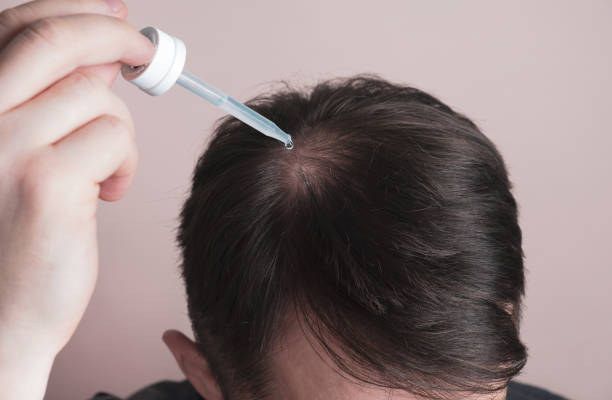Hair loss, a concern for millions globally, can be a significant source of distress. While it can be a natural part of aging, hair loss can also result from various factors such as genetics, medical conditions, or lifestyle choices. Understanding these causes and exploring effective treatments can help individuals regain their confidence and improve their quality of life. This blog will delve into the different types of hair loss treatment in Islamabad available today.
Understanding Hair Loss
Hair loss, medically termed alopecia, manifests in various forms. The most common types include:
Androgenetic Alopecia: Also known as male or female pattern baldness, this is the most prevalent form of hair loss. It is largely genetic, characterized by a receding hairline and thinning crown in men, while women may experience diffuse thinning across the entire scalp.
Alopecia Areata: An autoimmune condition where the immune system mistakenly attacks hair follicles, causing sudden, patchy hair loss. In severe cases, it can lead to complete hair loss on the scalp or body.
Telogen Effluvium: This type of hair loss occurs when a large number of hair follicles enter the resting phase (telogen) simultaneously, leading to widespread thinning. It is often triggered by stress, illness, or hormonal changes.
Traction Alopecia: Caused by continuous tension or pulling on the hair, often due to hairstyles such as tight ponytails or braids. If caught early, it is usually reversible by changing hairstyles.
Medical Treatments
Several medical treatments are available for hair loss, each with varying degrees of effectiveness.
Minoxidil: An over-the-counter topical treatment available in 2% and 5% concentrations. Applied directly to the scalp, it stimulates hair follicles and prolongs the growth phase of hair. It can take several months to see results, but many users experience significant regrowth and thickening of hair.
Finasteride: A prescription oral medication primarily used to treat male pattern baldness. It works by inhibiting the conversion of testosterone to dihydrotestosterone (DHT), a hormone that shrinks hair follicles. Clinical studies have shown that finasteride can slow hair loss and promote regrowth in a significant percentage of men.
Platelet-Rich Plasma (PRP) Therapy: This treatment involves drawing a patient’s blood, processing it to concentrate the platelets, and injecting the plasma into the scalp. Platelets contain growth factors that can stimulate hair follicle activity and promote hair growth. PRP therapy has gained popularity due to its natural approach and promising results.
Hair Transplant Surgery: For those with advanced hair loss, hair transplant surgery can offer a more permanent solution. Techniques such as Follicular Unit Transplantation (FUT) and Follicular Unit Extraction (FUE) involve harvesting hair follicles from a donor area (usually the back of the head) and transplanting them to the thinning or balding areas. While effective, this option can be costly and requires recovery time.
Lifestyle and Home Remedies
In addition to medical treatments, certain lifestyle changes and home remedies can support hair health and potentially slow the progression of hair loss.
Balanced Diet: A diet rich in vitamins and minerals, such as iron, zinc, and biotin, is essential for healthy hair. Foods like leafy greens, nuts, seeds, and lean proteins provide the nutrients necessary for hair growth and strength.
Stress Management: Chronic stress can contribute to hair loss, so managing stress through practices like meditation, yoga, and regular exercise can have a positive impact on hair health.
Scalp Care: Maintaining a healthy scalp environment is crucial for hair growth. Regularly washing and massaging the scalp can improve blood circulation and keep hair follicles healthy. Avoiding harsh hair treatments and minimizing heat styling can also prevent further damage.
Essential Oils: Some essential oils, such as rosemary, peppermint, and lavender, have been shown to promote hair growth. Diluting these oils with a carrier oil and massaging them into the scalp can enhance their effectiveness.
Emerging Treatments
Research into hair loss treatments is ongoing, with several promising developments on the horizon.
Low-Level Laser Therapy (LLLT): LLLT devices use red light to stimulate hair follicles and promote growth. While the exact mechanism is not fully understood, studies have shown positive results, making this a non-invasive option for hair loss treatment.
Stem Cell Therapy: Stem cell therapy involves using stem cells to regenerate hair follicles. Although still in the experimental stages, early results suggest it could become a revolutionary treatment for hair loss.
JAK Inhibitors: Originally developed for autoimmune diseases, JAK inhibitors have shown potential in treating alopecia areata by blocking the immune response that attacks hair follicles.
Conclusion
Hair loss can be a challenging experience, but with a variety of treatments available, there is hope for those looking to regain their hair and confidence. From medical interventions like minoxidil and finasteride to lifestyle changes and emerging therapies, each individual can find a solution that works best for their unique situation. Consulting with a healthcare professional is crucial to developing a personalized treatment plan and achieving the best possible results.
By understanding the causes of hair loss and exploring the available treatments, individuals can take proactive steps to improve their hair health and regain their self-esteem. Whether through medical treatments, lifestyle changes, or emerging therapies, there is a solution for everyone.





Comments